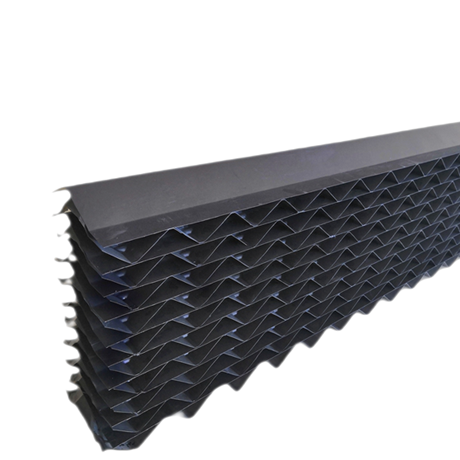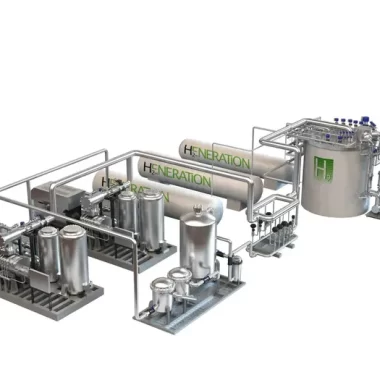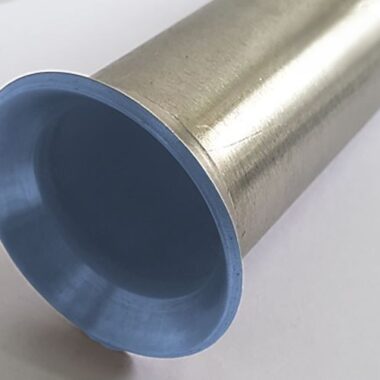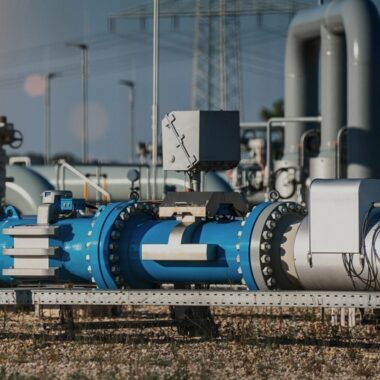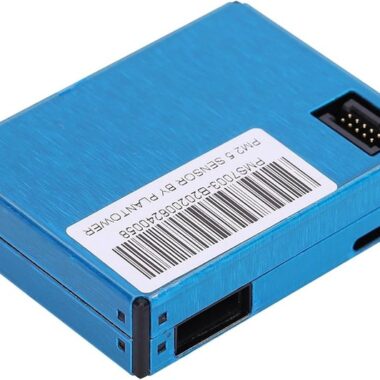High-Efficiency Drift Control
Introduction
High-efficiency drift control is a crucial aspect of cooling tower efficiency, ensuring minimal water loss and reducing environmental and health risks. Drift refers to the tiny water droplets that escape from the cooling tower exhaust, carrying dissolved minerals and potential contaminants. If not properly controlled, drift can lead to water wastage, scaling on nearby structures, environmental pollution, and health hazards like the spread of Legionella bacteria, which can cause Legionnaires’ disease. Traditional drift control methods have relied on basic eliminator designs and periodic maintenance. However, with increasing water conservation demands, stricter environmental regulations, and advancements in cooling technologies, high-efficiency drift control has become a necessity. Modern drift control solutions incorporate next-generation eliminator designs, smart monitoring systems, hydrophobic coatings, and computational fluid dynamics (CFD) optimization to significantly reduce drift losses. By implementing high-efficiency drift control measures, industries can achieve drift loss reductions to as low as 0.0005% of the circulating water flow, saving thousands of liters of water annually while ensuring compliance with regulatory standards.
Key Factors for High-Efficiency Drift Control
Advanced Drift Eliminator Design
Drift eliminators play a crucial role in reducing water droplet escape from cooling towers. High-efficiency designs incorporate:
- Multi-Stage Eliminators – These use multiple deflection paths to ensure maximum droplet capture.
- Cellular Drift Eliminators – Their honeycomb-like structure enhances water separation while maintaining airflow efficiency.
- Optimized Blade Profiles – Specially designed curved or zigzag blades maximize droplet capture while minimizing airflow resistance.
Material Selection for Longevity
The durability of drift eliminators depends on the materials used. Common materials include:
- UV-Resistant PVC – Prevents degradation from sunlight exposure and ensures long-lasting performance.
- FRP (Fiberglass Reinforced Plastic) – Offers superior resistance to chemicals and extreme temperatures.
- Polypropylene Coatings – Used to enhance water repellency and prevent scaling.
Airflow Optimization for Efficient Operation
Controlling airflow inside the cooling tower is critical to minimizing drift losses.
- Proper Fan Speed Regulation – Reduces excessive turbulence that can lead to water droplet escape.
- Balanced Air and Water Flow – Prevents high-speed airflow from carrying water droplets beyond the eliminators.
- CFD-Based Airflow Analysis – Computational Fluid Dynamics (CFD) helps in designing efficient drift eliminator placements and optimizing air movement.
Effective Water Droplet Separation Mechanisms
Reducing droplet size and ensuring effective separation are vital for high-efficiency drift control.
- Multiple Deflection Chambers – Breaks water into finer droplets, allowing them to settle back into the cooling tower.
- Hydrophobic Coatings – Applied to eliminator surfaces to enhance water repulsion and prevent clogging.
- High-Density Eliminator Placement – Increasing the density of drift eliminators improves their ability to capture droplets.
Regular Maintenance and Performance Monitoring
To maintain high efficiency, regular inspections and cleaning are necessary.
- Scheduled Cleaning and Inspections – Prevents scaling, clogging, and microbial growth.
- Replacement of Worn-Out Eliminators – Ensures continued high performance.
- Real-Time Drift Monitoring – Using smart sensors to detect excessive drift and adjust operational parameters accordingly.
Compliance with Regulatory Standards
High-efficiency drift control must adhere to industry standards to ensure safety and environmental compliance.
- ASHRAE (American Society of Heating, Refrigerating, and Air-Conditioning Engineers) – Defines limits for drift losses to minimize Legionella risks.
- Cooling Technology Institute (CTI) Guidelines – Provides best practices for drift eliminator efficiency.
- EPA & Environmental Regulations – Ensures drift emissions are within permissible limits to prevent air and water pollution.
Water Conservation and Efficiency Improvements
A well-designed drift control system significantly reduces water wastage.
- Ultra-Low Drift Rates – High-efficiency eliminators can reduce drift loss to as low as 0.0005% of circulating water flow, saving thousands of liters of water annually.
- Water Recovery Systems – Recapture drifted water and return it to the system, further reducing losses.
- Smart Water Management – IoT-based systems adjust cooling tower operations to optimize water usage.
Innovations in High-Efficiency Drift Control
Next-Generation Drift Eliminators
New eliminator designs focus on enhanced aerodynamics and low-pressure drop to improve efficiency. Innovations include:
- 3D-Printed Drift Eliminators – Customized designs optimized for specific cooling tower configurations.
- Self-Cleaning Eliminators – Coated with anti-fouling materials to reduce dirt and microbial buildup.
- Modular Drift Eliminator Panels – Easy-to-replace sections that allow for quick maintenance and reduced downtime.
Smart Monitoring Systems with IoT Integration
Modern drift control systems integrate IoT-enabled sensors and AI-based analytics to optimize performance in real time.
- Drift Loss Sensors – Continuously measure drift rates and provide alerts for necessary adjustments.
- AI-Powered Predictive Maintenance – Detects early signs of drift inefficiency and schedules preventive maintenance.
- Automated Fan Speed Control – Adjusts airflow dynamically to reduce drift without compromising cooling efficiency.
Hydrophobic and Anti-Adhesive Coatings
Nanotechnology-based coatings improve drift eliminator efficiency by preventing water adhesion.
- Self-Repelling Surfaces – Reduce the chances of water droplets escaping.
- Anti-Microbial Properties – Prevents biofilm formation, which can clog eliminators.
- High-Temperature Resistance – Ensures functionality in extreme environments.
CFD-Based Design Optimization
Computational Fluid Dynamics (CFD) simulations help engineers create more efficient drift eliminators by analyzing airflow and water droplet behavior.
- Predictive Modeling – Identifies areas of high drift loss and suggests design improvements.
- Enhanced Baffle Configurations – Optimized for minimal pressure drop while maximizing drift separation.
- Custom Solutions for Large-Scale Cooling Towers – CFD simulations help in tailoring designs for specific industrial needs.
Hybrid Cooling Technologies for Reduced Drift
Combining different cooling methods can further enhance drift control.
- Dry-Wet Hybrid Cooling – Uses dry cooling during cooler months to minimize water usage.
- Indirect Cooling Systems – Prevents direct exposure of water to airflow, reducing drift risk.
- Integrated Water Recovery Units – Captures escaped droplets and channels them back into the system.
Conclusion
High-efficiency drift control is no longer an optional enhancement—it is a critical requirement for industries relying on cooling towers. By implementing advanced drift eliminators, optimized airflow management, real-time monitoring, and innovative materials, industries can significantly reduce drift losses, improve operational efficiency, and comply with stringent environmental standards. The integration of IoT-based monitoring systems, nanotechnology coatings, and CFD simulations has transformed drift control, enabling cooling towers to operate with maximum water conservation and minimal emissions. These advancements contribute to cost savings, extended equipment lifespan, and improved environmental sustainability. As industries continue to prioritize energy efficiency and water conservation, the evolution of drift control technologies will play a key role in shaping sustainable cooling solutions for the future. Companies investing in cutting-edge drift control innovations will not only enhance operational reliability but also reduce environmental footprints and ensure regulatory compliance.


